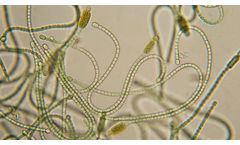Liver Damage Articles & Analysis
14 articles found
Cyanotoxins are toxic substances produced by cyanobacteria, or blue-green algae, which can proliferate in water bodies under conditions like high nutrient levels and warm temperatures. There are over 1,118 different cyanotoxins identified globally in freshwater environments across 66 countries, illustrating the widespread nature of this ...
The researchers found that in laboratory tests, the extracts reduced UVB damage and improved wound healing, while also affecting the production of collagen, which keeps skin elastic. ...
These enzymes are released into the bloodstream when heart muscle is damaged and can indicate the severity of the damage. Liver enzymes such as alanine aminotransferase (ALT) and aspartate aminotransferase (AST) are used to diagnose liver disease. Elevated levels of these enzymes in the blood can indicate liver ...
When certain organs and tissues of the human body are damaged or disease occurs, some enzymes are released into blood, urine or body fluids. Such as acute pancreatitis, serum and urine amylase activity is significantly increased; hepatitis and other causes of liver damage, hepatocyte necrosis or enhanced permeability, a large amount of ...
When certain organs and tissues of the human body are damaged or diseased, certain enzymes are released into blood, urine or body fluids. Such as acute pancreatitis, serum and urine amylase activity were significantly increased. Hepatitis and other causes of liver damage, hepatocyte necrosis or increased permeability, a large amount of ...
Loss of glutathione reductase makes cells more sensitive to oxidants and antibiotics. For patients with liver damage, the detection of glutathione reductase can enable us to understand whether the function of the body's glutathione antioxidant system is sound. ...
There is currently no cure for biliary tract diseases other than liver transplantation, so new modalities of treatment are urgently needed. ...
What is liver transplant in Delhi? The liver transplant is nothing but the replacement of a damaged liver with a new one. ...
No parent wants to hear their child has a condition that might affect their education, family life, and overall well-being. Unfortunately, there’s currently no restorative treatment for short bowel syndrome (SBS). Monitoring nutrition is a lifelong necessity for anyone with this disorder. This means that no matter the cause of SBS, there are certain things you should know about nutrition ...
However, the Phase III study of Mylotarg was launched in 2004 and found that it would cause fatal liver damage. Pfizer voluntarily applied for its delisting in 2010. Unlike the first-generation ADC drugs using mouse-derived monoclonal antibodies, the second-generation ADC drugs use humanized-derived monoclonal antibodies represented by trastuzumab, which improves ...
These risk factors can easily lead to liver damage, which subsequently develops into liver fibrosis, cirrhosis and eventually liver cancer. ...
Fibrosis-relatedRuminococcaceaeandVeillonellaceaespecies undergo metagenome sequencing, and four representative species are administered in three mouse NAFLD models to evaluate their effects on liver damage. This study provides the evidence for the role of the microbiome in the liver fibrosis pathogenesis, especially in non-obese subjects. ...
Abstract Serine-rich splicing factor 3 (SRSF3) plays a critical role in liver function and its loss promotes chronic liver damage and regeneration. As a consequence, genetic deletion of SRSF3 in hepatocytes caused progressive liver disease and ultimately led to hepatocellular carcinoma. Here we show that SRSF3 is decreased in ...
Objective: To investigate liver function in vinyl chloride workers and assess its relation with current/past occupational exposure to vinyl chloride monomer (VCM). Methods: A medical examination including the execution of liver function tests (LFTs) and liver ultrasonography was executed in a group of 757 workers with a long-standing service in ...











